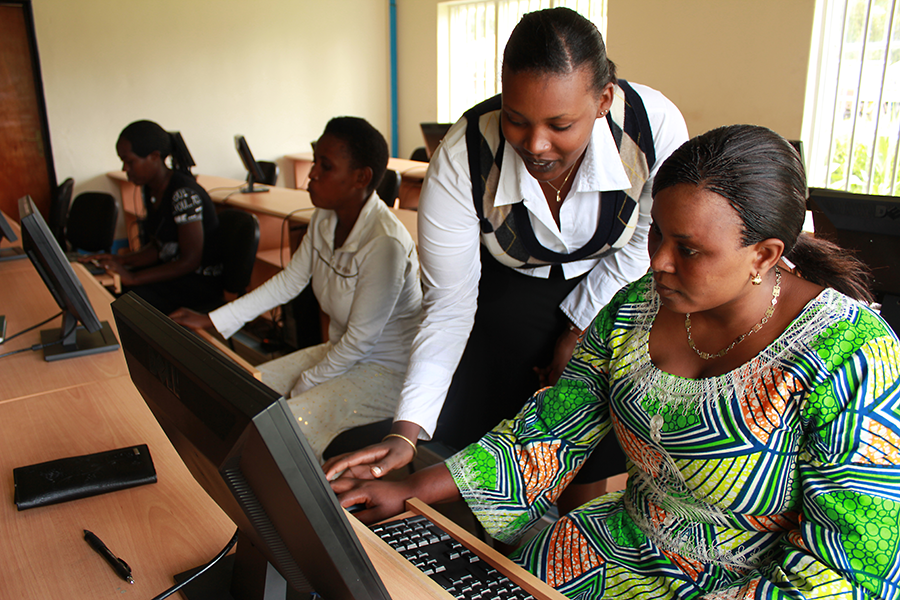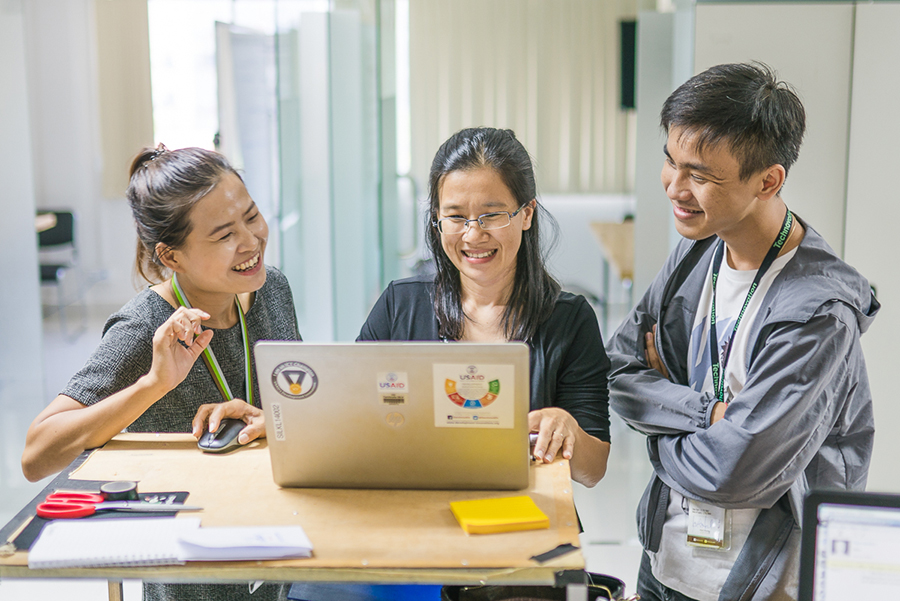Let us know what type of content you'd like to see more of. Fill out our three question survey.
Digital Rights and the Technology Workforce: Why Do We Need Our Technology Professionals to be Informed on Human Rights?
This post is one of a series of posts on Digital Democracy.
Jul 11, 2024
We are in a digital revolution, from which governments, economies, and individuals are poised to reap many benefits. Local workforce development is inextricably linked to this revolution on a country’s economy because governments and the private sector will be unable to benefit without a capable workforce in place. Many developing countries have a growing and vibrant technology workforce, but workforce needs are often mismatched with local expertise. This is in part due to brain drain of the brightest talent—due to hopes for a better quality of life, limited opportunities in domestic markets, and fierce international competition for technology-related skills. Gaps in technology-related formal and informal education are also a challenge, whereby market needs are not met by domestic formal education. This is not just exclusive to developing countries: There are global shortages of skills including cybersecurity (estimated at a gap of 3.4 million experts globally), deep learning, natural language processing, and robotic process automation. Digital skills gaps in these areas can have significant implications for economic development, technological progress, and national security.

Photo: USAID Nigeria.
Digital skills are complex and multifaceted, and the skills needed in any given workforce can vary, from cybersecurity to critical thinking. I have been thinking about an emerging area of digital skills for the technology workforce: their linkage to digital rights. If tech professionals have skills gaps in this area, surely there will be implications not just for the economy, technological progress, and national security, but for the protection of digital rights. This post is one of a series about digital democracy.
Why is an Understanding of Human Rights so Vital for the Tech Workforce?
Digitalization offers numerous possibilities for the expression of human rights – increased avenues through which to access information, more opportunities to express freedom of speech, new ways to gather and lobby for our shared interests. Yet digital technologies can also amplify discrimination, provide platforms for hate speech, and violate our rights, such as how facial recognition technology may violate the right to privacy. The implications of digital technologies on our human rights are widespread and significant, and so this is an area in which our technology workforce must be knowledgeable.
Actions taken by tech professionals can have implications for digital rights, whether a data analyst processing personal data for a health tech firm, a tech entrepreneur developing her new social networking products, or a company’s IT staffer implementing an AI system to scrub resumes.
These workers are making choices that impact, for example, how an individual’s personal data—and thus right to privacy—is protected; a choice on whether freedom of expression is protected on that platform; and a choice on how candidates are assessed against their peers in the hiring process. To protect digital rights, each of these workers must understand digital rights and the implications of their choices on these rights.
Of course, we need governments and the private sector to put in place policies and protocols that protect and uphold digital rights. The workforce can only operate within the bounds of their enabling environment. The workforce must understand what digital rights are, what it means to protect them, and how national legislation and international best practices apply to their work. This will support the workforce to make conscious decisions to protect the human rights of users, to the extent that it is in their control. This might look like:
- An IT staffer pushing management for privacy protocols on who can access data, who controls data, and how that data is used.
- An entrepreneur incorporating the principle of ‘human rights by design’ into her social network app to ensure rights protection.
- A business development executive at an AI firm doing due diligence on how a prospective customer might use their technology.
- A developer deliberately using diverse datasets to train an algorithm to mitigate the risks of bias.
Transformative technologies such as AI only increase the urgency to understand emerging risks and to build human rights into digital technologies from the design phase. As new technologies emerge, the ways in which rights can be violated online are ever-increasing. The tech workforce will need to understand how new technologies impact digital rights, not least those who are working on their development or implementation.

Photo: USAID Cambodia.
How Informed is the Global Tech Workforce on Digital Rights?
This is really a trick question, as it is impossible to gauge the level of understanding of digital rights among the technology workforce without comprehensive digital skills data available. It is not just a lack of data, but also a lack of definition of digital skills. There is wide recognition that, to keep up with the changing technology landscape, not just highly technical skills including AI, big data, and mobile app development are needed. All individuals—including the tech workforce—require cognitive skills or soft skills such as critical thinking to—for instance—be able to identify mis- and disinformation and analyze whether to trust responses by ChatGPT. However, there appears to be a lack of recognition that digital rights are another critical aspect of digital skills for the technology workforce. International Labour Organization research on workforce competencies and evolving needs in lower and middle-income countries notes a substantive gap in education, stating that digital skills or social studies training curricula in schools could include topics such as digital rights and general awareness of how digital technology, big data, and algorithms shape society.
Yet as the digital space is moving so quickly, we don’t yet have the language to comprehensively talk about protecting human rights online. Technology also moves so fast, and the requirements for workforce skills follow pace. It is therefore no surprise that formal curricula on digital rights are lacking, but there is hope that informal education can bridge this gap. Just a quick online search finds that there is no shortage of training on AI and human rights or ethical approaches to AI, yet it remains to be seen whether such training is available around digital rights more broadly, or in low- and middle-income countries. If you, dear reader, are aware of any digital rights training for the technology workforce, then let us know!
I hope that from this blog, the need for a workforce smart on digital rights is clear. It will be interesting to follow how global digital skills frameworks, country digital skills strategies, workforce programs, and formal curricula evolve with—or without—the changing technology landscape. I hope that digital rights become a core part of these evolutions.